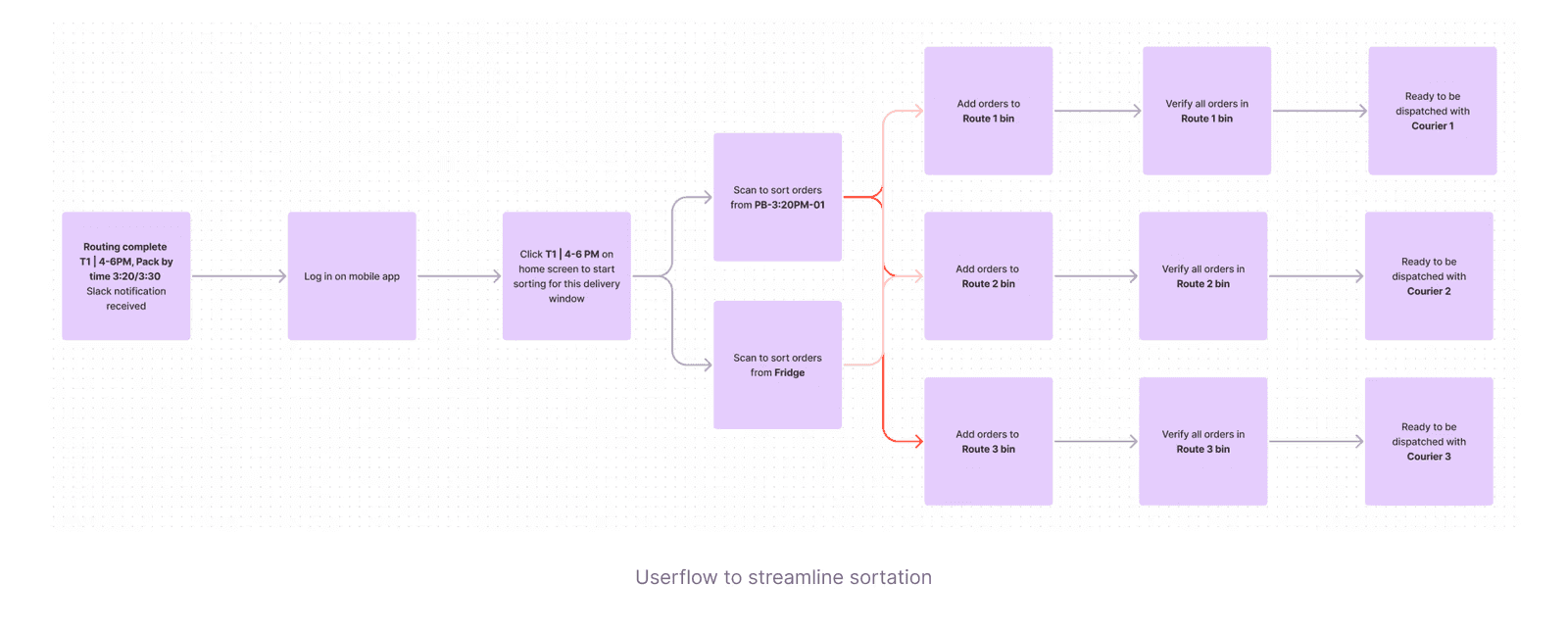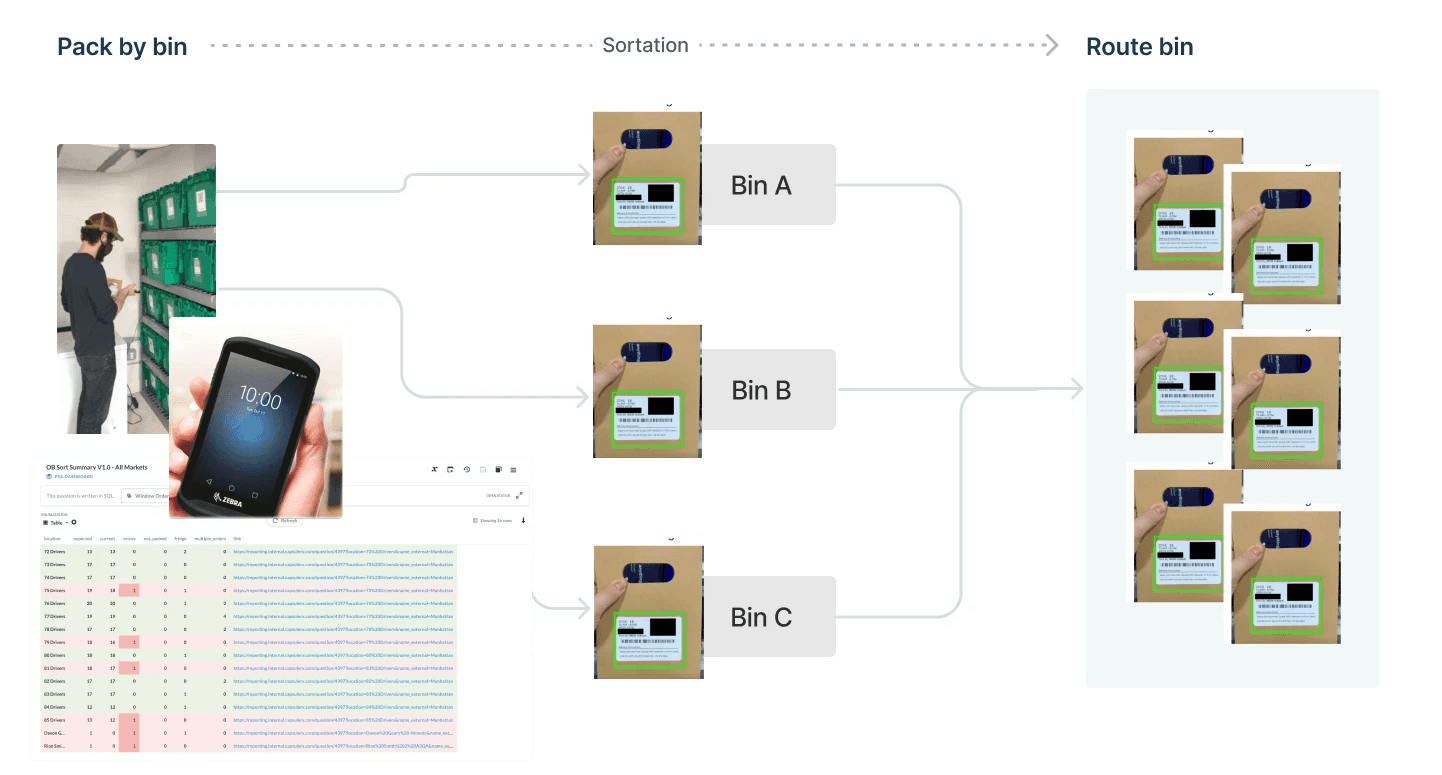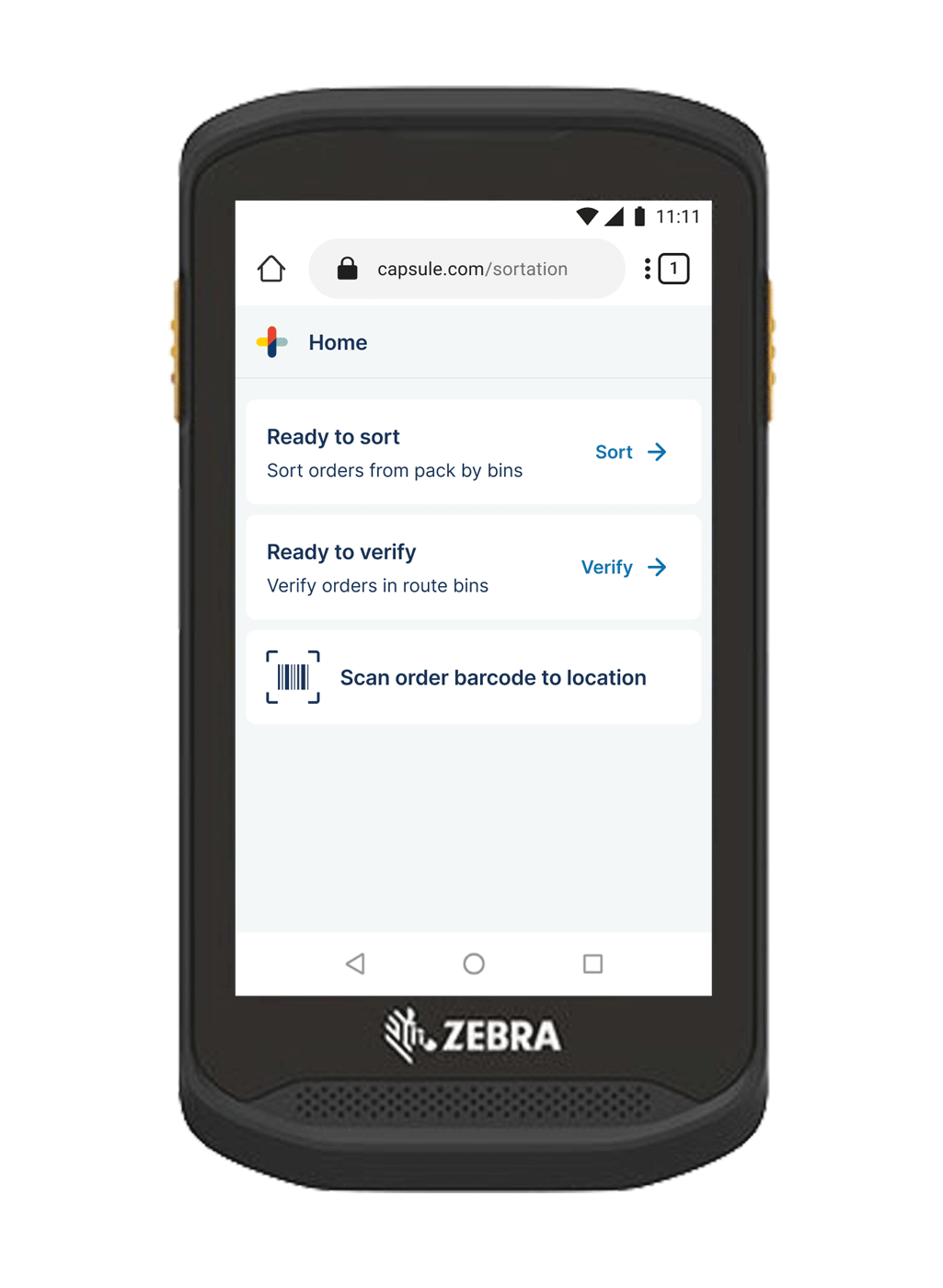Defining the problem
The existing sortation process was supported by a legacy Metabase dashboard accessible only through desktop. Sorters relied on this color-coded dashboard to track order locations and identify errors, but had to physically move across the pharmacy to locate orders and then return to the screen to know what to do next.
This back-and-forth made the process slow and mentally exhausting. Verifying sorted orders was also done manually, leading to frequent errors and low confidence in the accuracy of their work. The system wasn’t designed for the fast-paced, physical environment of pharmacy operations and was dependent on one dashboard owner, making it unsustainable and hard to scale.

Goals
Product Goal: Transform the desktop-dependent workflow into a mobile, guided experience that supports sorters at the shelf, where work actually happens.
Business Goal: Improve operational efficiency by reducing sortation time, minimizing manual errors, and providing a scalable interface that can grow with the team's needs.
As the design lead, my objective was to create a solution that brought clarity, confidence, and momentum to one of Capsule’s most critical backstage operations.
What users had to say

Through shadowing sorters in the pharmacy and speaking with supervisors, we uncovered several experience gaps:
Reliance on a single third-party dashboard created uncertainty and dependency. Sorters had no quick way to verify whether they were on track.
Fragmented tools—the Metabase dashboard plus a Zebra scanner—forced users to split their attention between two systems that didn’t talk to each other.
Lack of a unified interface meant sorters couldn’t see a holistic view of what needed to be completed before dispatch.
Manual verification introduced cognitive load and increased the likelihood of errors.
Sorters consistently expressed the need for clear, system-driven guidance, fewer steps, and real-time validation.
These insights shaped a solution focused on clarity, immediacy, and trust.

The digital experience
We redesigned the sortation workflow by moving it entirely onto the handheld Zebra scanner, giving sorters a clear, guided, and fully mobile experience at the shelf. The new interface presents a to-do–style list that surfaces exactly what needs attention, uses scan-based flows to drive every action, and provides real-time validation through success states, warnings, and error messages to reduce cognitive load and manual errors.
Built with components from the Ops Design System, the UI feels consistent with other internal tools and updates bin counts and progress instantly with each scan. By consolidating all tasks into one device and eliminating reliance on the desktop dashboard, the solution streamlines movement, boosts confidence, and transforms a fragmented process into an intuitive, reliable workflow.

The new guided, scan-based workflow improved the sort-on-time rate by 23% and reduced manual sorting errors by 82%, giving the operations team higher confidence and more predictable dispatch performance.
Early feedback showed the handheld experience was significantly faster, clearer, and easier to follow which directly contributed to measurable operational efficiency.
